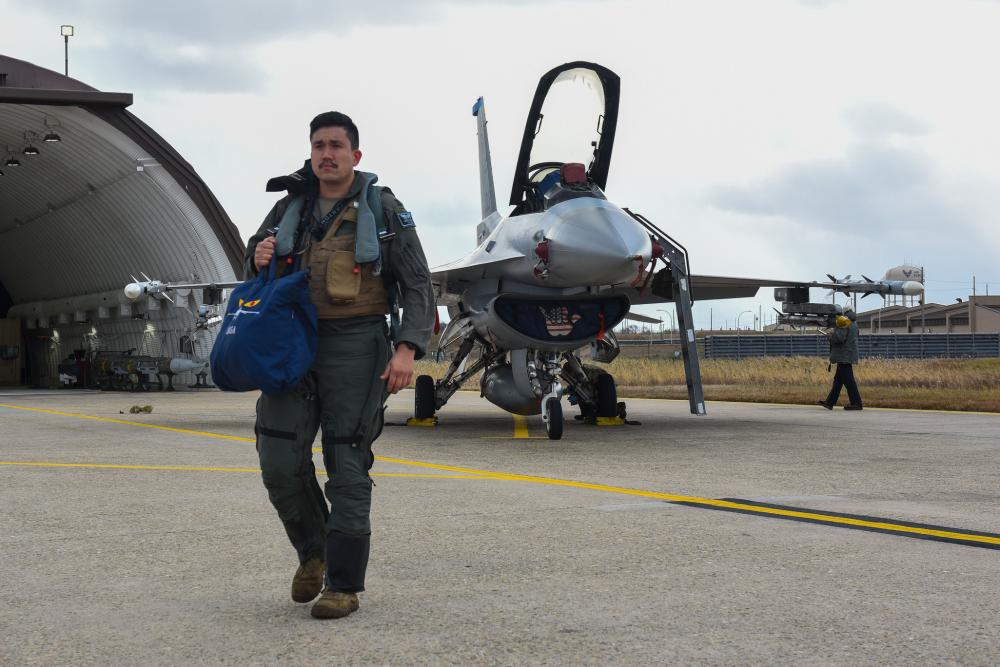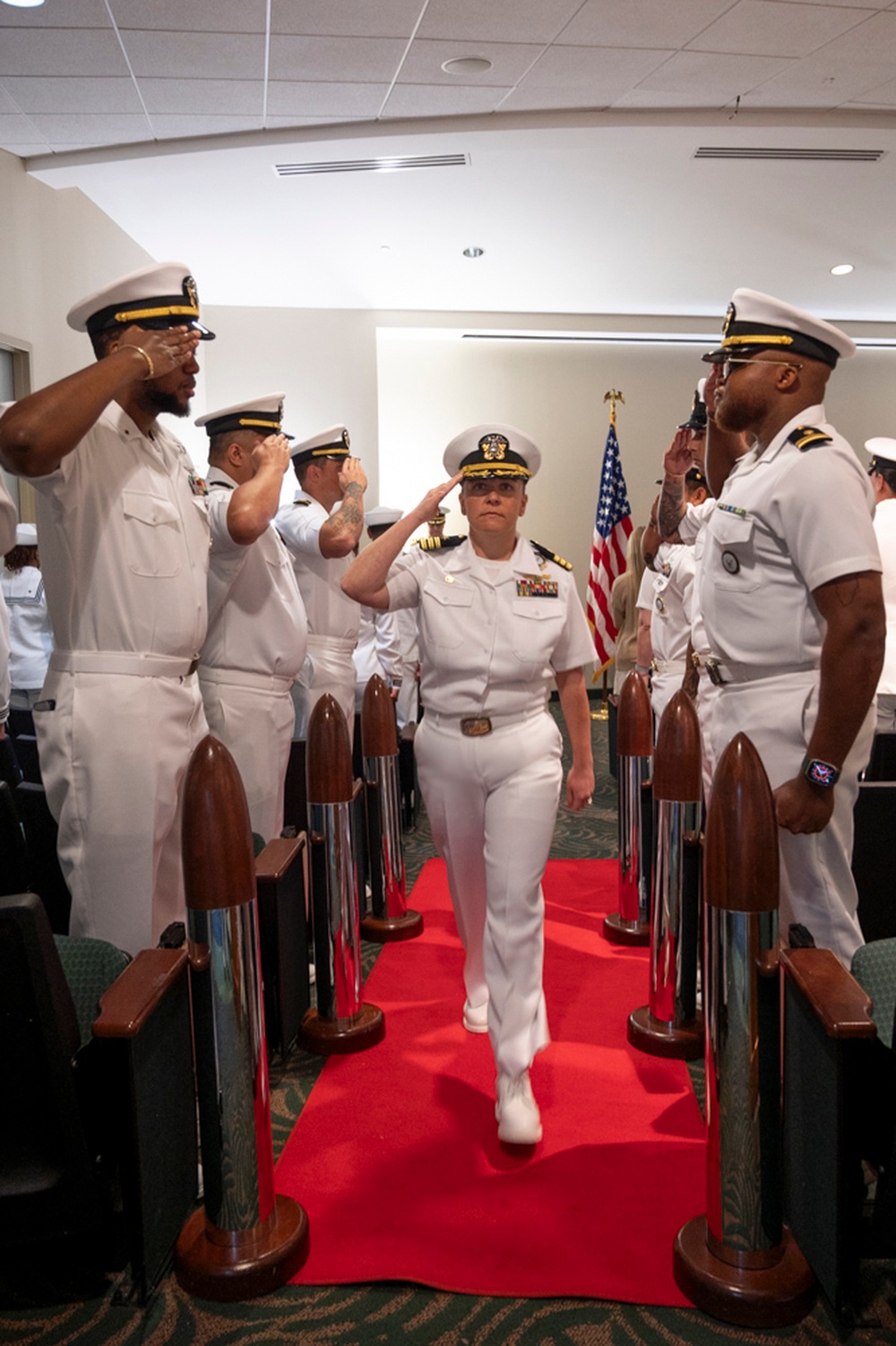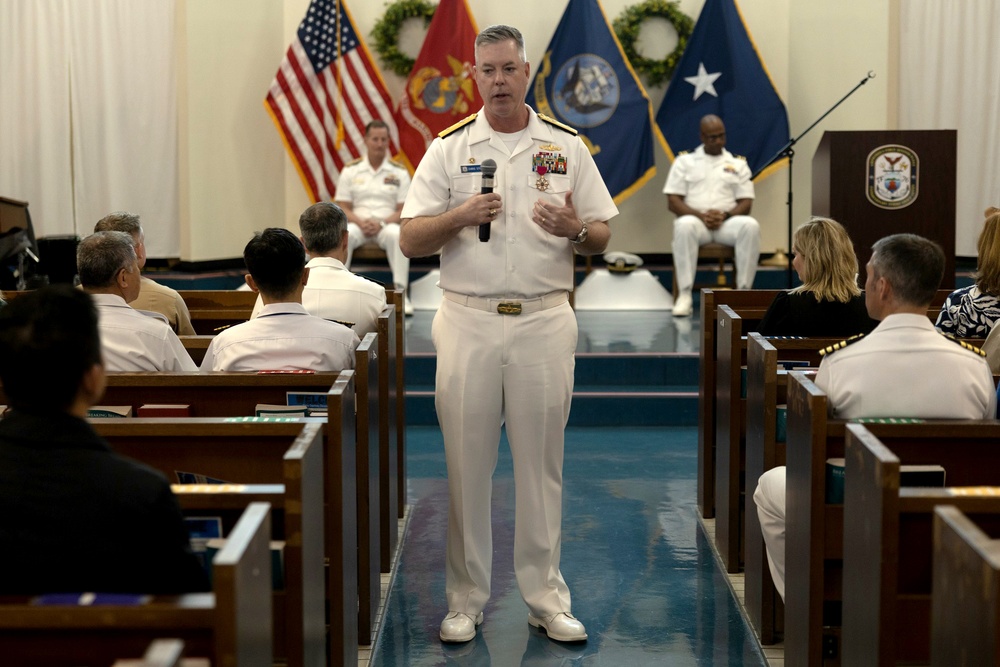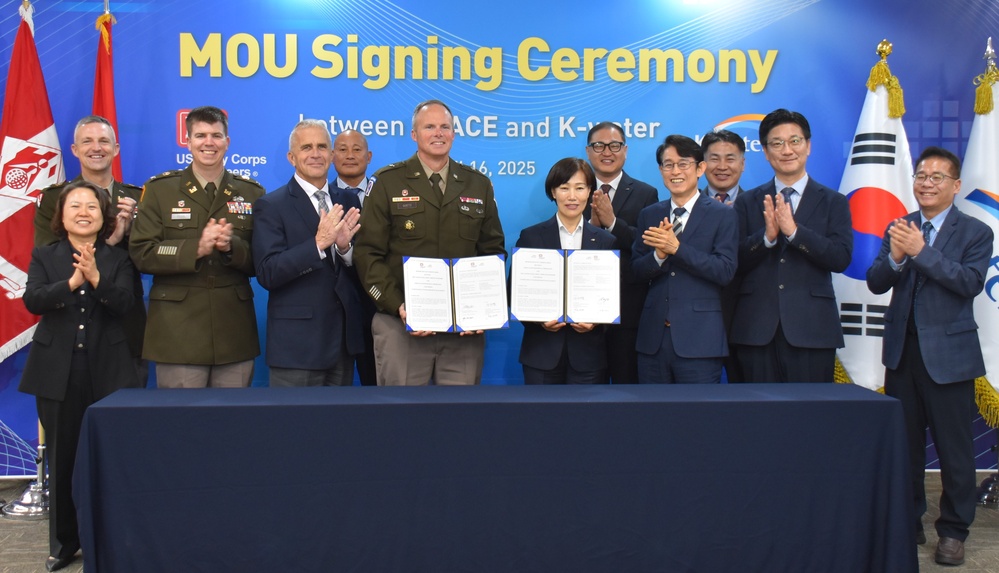DVIDS – News – 1% of the 1%: Capt Matthew “SAGA” Hale
KUNSAN AIR BASE, Republic of Korea — An F-16 Fighting Falcon sits in a hangar on the flightline. At first glance, it looks just like every other fighter jet in the 35th Fighter Squadron’s fleet but not to Captain Matthew “SAGA” Hale. He places his hand just below the canopy where his name is emblazoned in bold, black lettering. This is his jet. It is a special honor, and one that comes as the latest peak in a very unlikely journey.
Hale grew up in Arizona on a Navajo Nation reservation, an experience he likened to growing up in small town with a very homogenous community. His family raised sheep and he helped on the farm.
“It was unique because everyone grew up sort of the same and it wasn’t different walks of life,” said Hale.
The vast majority of Hale’s classmates and neighbors were Native American and everyone knew each other. This familiarity between the residents of the reservation also meant a deep sense of heritage and shared history. This is perfectly reflected by the traditional way that Hale would use to introduce himself back home.
“If I were to introduce myself, it would be Yá’át’ééh, Shí éí Matthew James Askíítsó Hale yinishyé. Kinyaa’áanii nishłį́, Bitsí’ łigai bashishchiin, Lók’aa’ Dine’é dashicheii, Bitsí’ łigai dashinalí,” said Hale. “That introduces myself, where I’m from, who my mom is… who I am.”
His father is white and his mother is Navajo. Through her, Hale can trace his heritage to the Kinyaa’áanii (The Towering House) clan, one of the four original Navajo clans.
“Especially with older generations, (this introduction) enabled me to meet so many people who just treat me as if I were their relative, even though I’ve never met them before, and it was truly heartfelt,” said Hale. “I didn’t know how different it was until I left.”
Hale first toyed with the idea of leaving the reservation when he became interested in aviation. His father, an aspiring pilot who gave up that passion to focus on raising his children, gave him his first taste of flight.
“He always brought me to airshows, and I was always fascinated by flight. I also had a camp counselor who was a recent graduate of the (Air Force) Academy… I was like, man, that guy is pretty sick. I kind of want to be like that guy.”
When Hale decided to pursue his goal of becoming an Air Force pilot, he knew he was embarking on a largely unprecedented journey.
“A lot of people say they’re going to leave (the reservation). You get that culture shock because not everyone is thinking same thing. They end up coming back and they keep that local kind of view.”
Hale didn’t want to end up in that category and was determined to make his dream a reality.
The first hurdle was gaining an appointment to the Air Force Academy. While he didn’t get accepted right away, he was able to work his way in through the U.S. Air Force Academy Preparatory School. During his time at the academy, he got the chance to interact with many pilots and his ambition and determination only grew.
“The fighter pilot culture drew me in. Just them being at the top of their game. (They have) the go-and-get-it personality of a pit bull on a leash, always wanting to be that tip of the spear.”
His hard work earned him a pilot slot and he received his commission in 2010. After a brief stint as a Gold Bar recruiter, Hale then entered flight training.
It was not lost on him that he was already accomplishing something few people like him had before.
“I don’t know many other Native American pilots out there,” said Hale. “It feels daunting to achieve something like this. Every step of the way was like ‘hell yeah, I made it’, but there’s never a finishing point and that’s always been driving me.”
This attitude led him to his current assignment at the Wolf Pack, one that he has embraced fully.
“The military allowed me to travel to Korea – something I never thought I’d be able to do in a million years,” Hale said with a smile. “All the opportunities to practice (flying) and the integration with our allies… they had a lot they did that was similar to what we do.”
Hale has had the opportunity to participate in combined training operations with members of the ROK, Singaporean, and Thai air forces. In each experience, he gained more of an appreciation for these partners and how well they can work together despite coming from different countries.
“We’re all fighter pilots,” said Hale. “We kind of speak the same language even if it isn’t our first language.”
Hale might be a world away from his roots, but when asked if he noticed any similarities between the community he grew up in and the sense of community in his squadron, he was quick to respond.
“Most definitely because I like to think of the fighter community as family. It makes me proud of my heritage and my upbringing; very conscientious of things and respectful of those above us. The military is structured very similar in that way. That’s what is expected of us: to constantly improve each other and be the best we can be.”
Having now become a veteran “Panton” pilot and leader within the 35th FS, Hale admits to feeling a bigger responsibility as a representative of Native Americans to his fellow service members as well as an inspirational figure for other minorities interested in becoming pilots.
“I want to show that even though I came from a reservation, I can fly a fighter jet- just like all these people who come from really good schools. It’s something you can achieve.”
According to Defense Manpower Data Center and Air Force Personnel Center statistics, less than 0.5% of Americans are currently serving in the military, less than 1% of the Air Force is Native American, less than 20% are officers and less than 3% are pilots. Hale has defied those odds and continues to soar upward – in a jet with his name on it, no less.
He was asked how it felt to fly it.
“When I first pushed it up, I had goosebumps.”


 Private Internet Access gives you unparalleled access to thousands
of next-gen servers in over 83 countries and each US state. Your
VPN experience will always be fast, smooth, and reliable.
Private Internet Access gives you unparalleled access to thousands
of next-gen servers in over 83 countries and each US state. Your
VPN experience will always be fast, smooth, and reliable.

